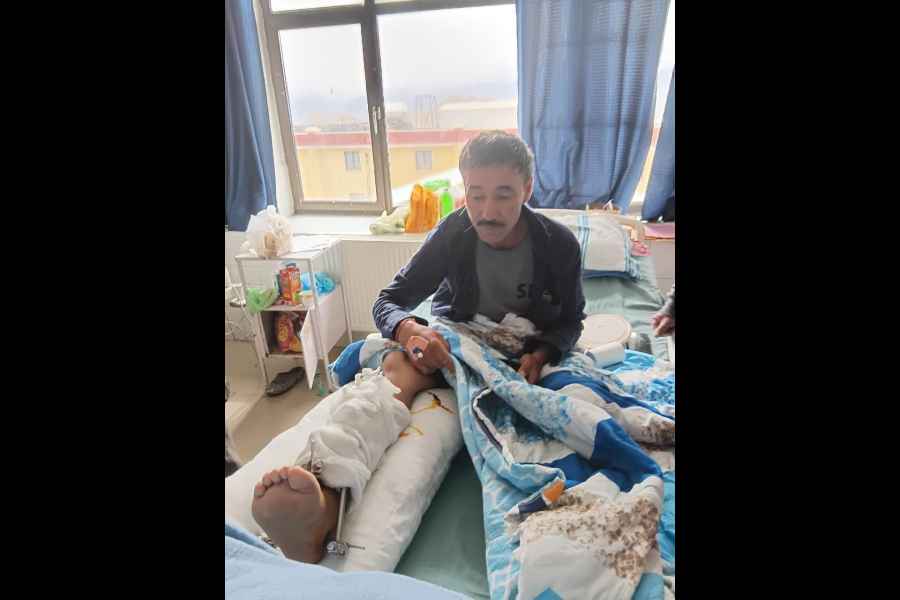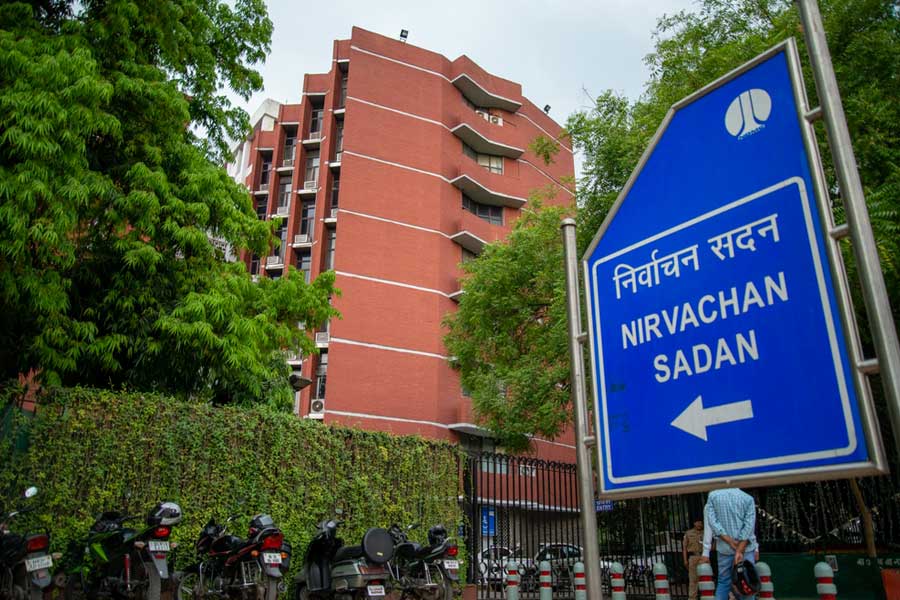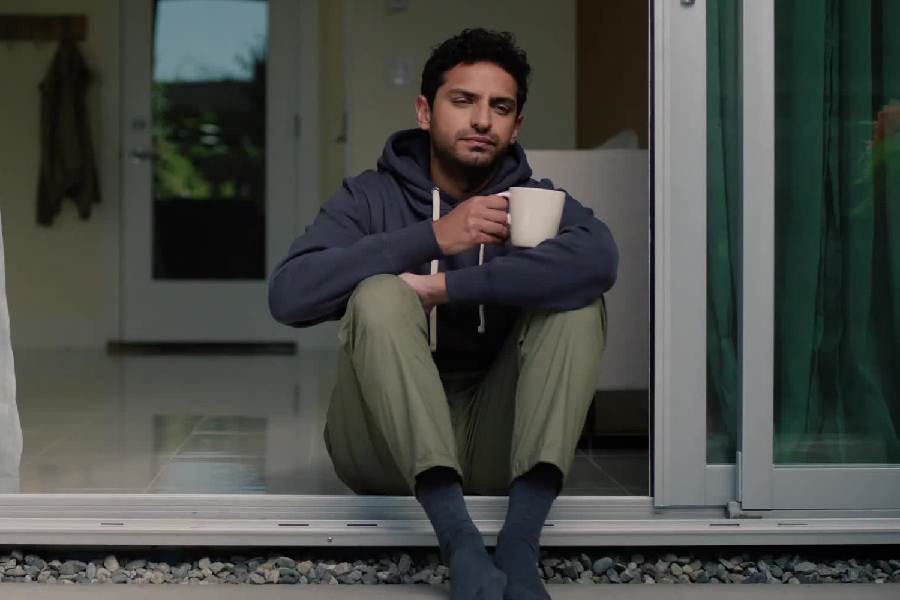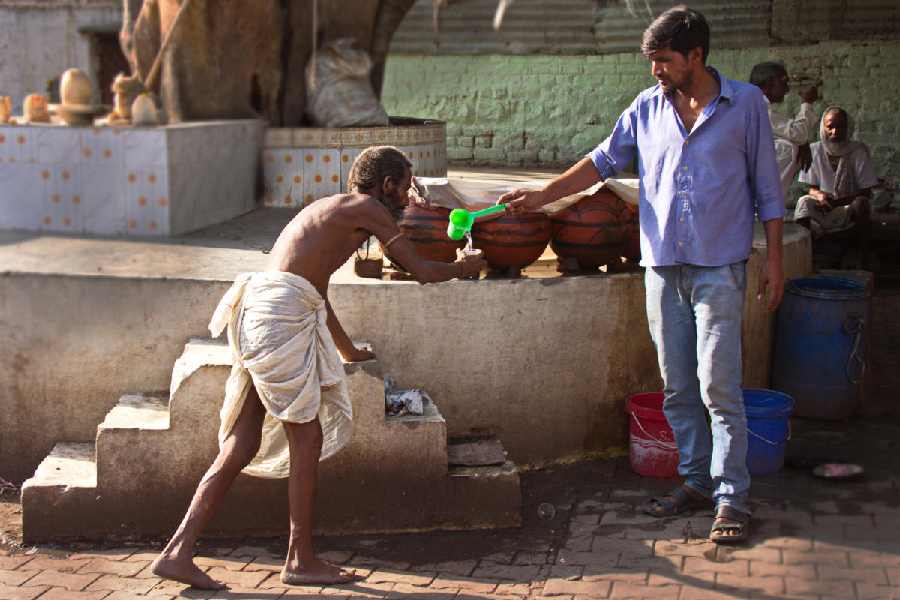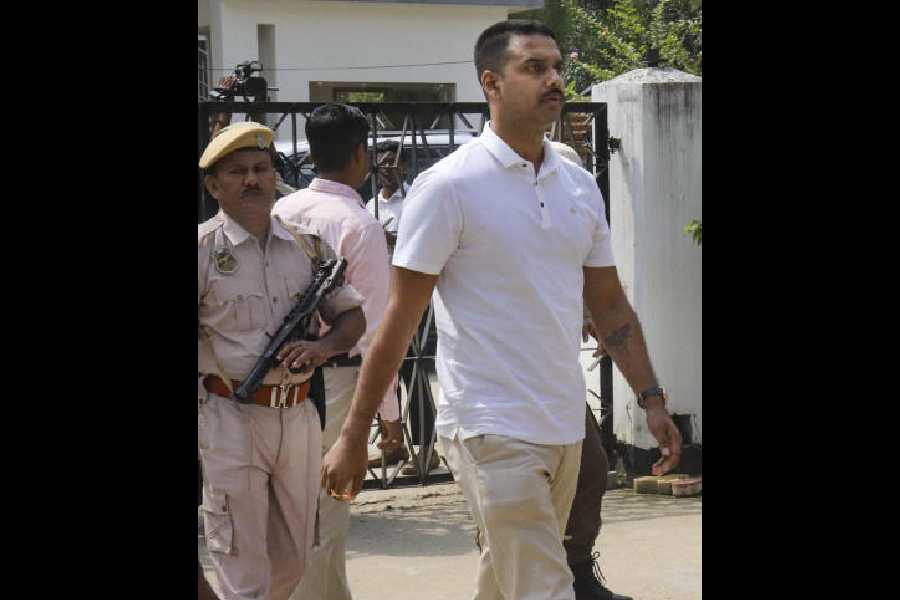 |
 |
| (Top) Zakia Jafri, wife of Ehsan Jafri who was burnt alive during the Godhra riots, and her daughter visit their house at Gulbarg Society in Ahmedabad on Monday. (PTI) |
Ahmedabad, Feb. 27: The burnt walls bear witness how cruelly her father was killed by rioters but as she stands before her childhood home, the pictures flooding into Nishrin Jafri’s mind are of packed bookshelves and poetry sessions.
She would love to come back and stay in the house —site of one of India’s worst communal pogroms on February 28, 2002 — if it is restored, the 46-year-old US-based executive said here today.
For her mother Zakia and brother Tanvir, though, the painful memories are still too raw: they want the house in Ahmedabad’s Gulbarg Society converted into a museum.
The family was among many past residents gathered at the now desolate residential complex a day ahead of the 10th anniversary of the night a mob killed Congress MP Ehsan Jafri and 68 others huddled at his home.
Three days later, Nishrin had returned from the US to listen to survivors’ accounts of how, as the mob stoned and torched most of the houses, the victims had rushed to the Jafris’ home for shelter, little realising that Ehsan was the rioters’ main target.
“My father was loved and admired by everyone. We still have many friends in the locality. I could never have imagined that such a thing could happen to him,” the tearful daughter said.
She fondly described Ehsan, a poet and former communist, as a voracious reader and spoke of how she handled his vast collection of books and how the poetry recitals at the house influenced her.
“Sometimes I feel I should approach Bill Gates or some other philanthropist and seek assistance to restore the house,” she said. “After all, Ahmedabad is my birthplace and I am a proud Gujarati.”
Tanvir, 49, did not share his sister’s optimism. “No, it cannot happen. It is ruled out. Nobody wants to come back now,” the Surat-based executive said.
He said plans were afoot to turn the house into a museum with the help of a Mumbai-based NGO, Centre for Justice and Peace.
The museum, if it comes up, will be “more than a memory”, social scientist Shiv Visvanathan has said. “It will be a manifesto for a different future. It is asking us, ‘Can we be a mirror to you?’”
The NGO has dropped its earlier idea of converting the entire complex, with its 19 bungalows and eight flats, into a museum because of the high property rates, Tanvir said.
He explained that though none of the residents want to return and are willing to sell their houses at prices 40 per cent lower than the market rate, the entire property would still have cost Rs 10 crore.
“So now we are exploring another option: to sell the 18 bungalows and eight flats (apart from the Jafri home) to a single person who would either build a hospital or a school there,” Tanvir said.
Finger at Modi
Former Bombay High Court judge Hosbet Suresh, member of a citizens’ tribunal that probed the riots, today repeated his claim about slain BJP leader and former state home minister Haren Pandya having implicated chief minister Narendra Modi.
Justice Suresh said Pandya had told the tribunal that on the evening of the Godhra train fire (February 27, 2002), Modi had told the police brass to allow Hindus to express their anger.
Pandya did not claim to be at the closed-door discussions at Modi’s home, but the purported statement corroborates that of suspended police officer Sanjiv Bhatt, who says he attended the meeting.
Justice Suresh said the Supreme Court-appointed special investigating team probing the riots was informed about the records of Pandya’s statement but never sought them.


